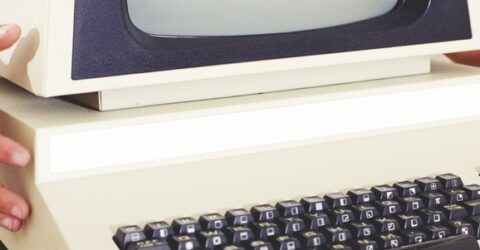Protecting your data when selling an old computer
There’s a surprisingly long list of things do before selling an old computer to keep your data safe

Like any electronic devices, computers tend to have a finite lifespan.
With enough parts and patience, it may be possible to make a desktop PC last forever, but few of us have the technical knowledge required to accomplish this.
When a computer begins to fail, warning signs include slow operation, frenetic fan activity, dwindling battery life or the dreaded Blue Screen of Death.
There may be other reasons to upgrade, such as a desire for a powerful gaming PC or a new job necessitating a laptop instead of a desktop computer.
Any of these scenarios could leave an existing device surplus to requirements, unless you pass it onto a family member.
You could take it to landfill, but computers are full of components which might retain some value.
Selling an old computer can be a useful source of income, though it requires preparatory steps to prevent personally identifiable information (PII) falling into the wrong hands.
(It’s worth noting that these principles also apply if you’re donating or gifting a laptop to someone – or even just scrapping it).
Getting your back up
Start the preparations for selling an old computer by checking whether the data it contains is being backed up.
Windows offers seamless integration with Microsoft’s OneDrive cloud storage, so any new or edited documents or files in the OneDrive folder will automatically be duplicated remotely.
Apple and Google offer similar services, but don’t assume data is being backed up, especially if it’s saved on the desktop or in local folders.
Transfer every file you want to keep into the cloud, onto a new computer via a physical cable or Bluetooth, or onto an external storage device like a USB flash drive.
Most web browsers automatically display webpage bookmarks or favourites on any device once you log in, but it may be necessary to export these bookmarks as a file.
Every browser has its own export process; in Edge, you’d click on the Favourites star button beside the address bar and select Export Favourites from the three-dots dropdown.
If you’ve paid for software packages, investigate whether these programs (or their licenses) can be transferred to a new device.
Note down passwords for apps, programs or websites – it’s easier to reset forgotten passwords on a device with cookies already saved – and log out of everything.
Banking apps may store digital keys on specific devices, so deactivate these before attempting to reactivate them on a new computer.
Screen wipe
Having preserved any data you want to salvage, it’s time to perform a factory reset.
This might give the old machine a new lease of life, though it’s only recommended as a last resort.
If you’re performing a factory reset, there’s no need to erase web browser histories or remove software packages, since the computer will be reset to its day-one condition.
Factory resets are strongly recommended, since manually deleting browser histories or software packages could leave swathes of PII undetected elsewhere.
It may also leave viruses and malware in situ, whereas a full reset eliminates everything that’s ever happened on the computer.
Before selling an old computer that’s been reset, ensure the format was a success by turning it on and checking it displays a Welcome or Setup screen, as it did when you bought it.
Give everything a clean – extracting dust from fan vents, shaking crumbs out of the keyboard – and pack it in bubble wrap or padding to ensure it won’t get damaged in transit.






